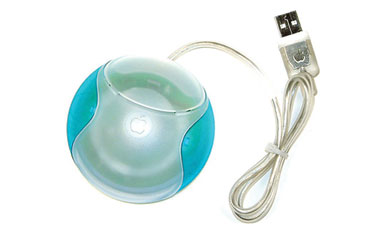In a way it’s too easy to pick on Apple. The company has been around for 40 years and in that time it helped usher in the personal computer, redefined what a PC could be with the Macintosh in 1984 and then went on a long trek into the wilderness, almost going bankrupt before getting a lift up from Microsoft, of all companies. And then Steve Jobs came back and in the next 14 years he served as CEO Apple went from nearly folding up to a company that was generating tens of billions of dollars in revenue. All of these products were created with Jobs back at the helm: iPod, iTunes, iMac, iPhone, and iPad.
They really liked the lowercase “i.”
During this time in particular, Apple’s reputation became cemented as a company that makes premium products and the term “Apple tax” got bandied about. You paid more for an Apple device, but you got something high quality in return.
Well, mostly.
The other thing Apple gained a reputation for–and why it is really such a juicy target for bad design–are the examples of form over function. I highlighted one already with the weirdly round original iMac mouse.
Next up is another aspect of the iMac, but one that concerns the current design, namely the arrangement of the ports.
Observe below the ports available on the 27 inch iMac:
They are neatly arranged. This is good.
They are all on the back of the computer. This is bad.
The front of the iMac is very clean. The display is flush with the unibody aluminum design, with a small Apple logo being the only embellishment.
When you look at the front of a typical PC case you’ll notice a couple of things. The first is that it is usually not as sexy or clean as an iMac, though some can look pretty nice. The other thing you will notice is the front of the case (sometimes the side) will usually include line in/line out jacks and a couple of USB ports. This makes it easy to plug or unplug a headset (something you may not want to always have connected to the computer) and more importantly, it gives easy access to USB ports. While some USB devices are unlikely to get unplugged often or at all (USB mice and keyboards, for example), others will rarely remain plugged in, like a USB flash drive. Insert flash drive, copy/save the data needed, remove the flash drive.
On most PCs this is easy. On the iMac it is always a nuisance because a) the USB ports are out of sight on the back and b) the iMac only pivots up and down on its hinge, not side to side, which would at least make it easier to turn to access the ports on the back.
This is bad design and worse, it’s bad design deliberately chosen to keep the front of the iMac clean-looking, the very definition of form over function.
I actually think Apple may revisit this decision but probably not before a complete redesign of the iMac happens and that doesn’t seem likely to happen soon.
(iMac owners can help alleviate the issue by using USB hubs that sit garishly out front.)


